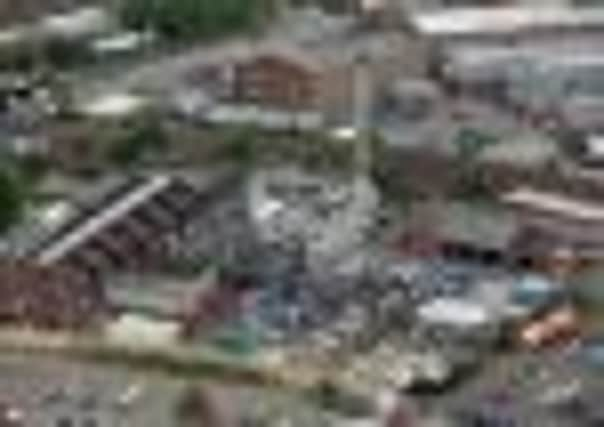Legionnaires’ outbreak: Suspect firms ignored for 2 years


Chemical firm Macfarlan Smith Ltd and North British Distillery, both in Wheatfield Road, Gorgie, were last inspected in February and March 2010, respectively.
It has been as long as four years since the other factories tested in the outbreak were last inspected. Burton’s Foods in Sighthill was last inspected by the HSE in June 2008, and Selex Galileo in February 2009.
Advertisement
Hide AdAdvertisement
Hide AdThe HSE has not yet confirmed whether it has had other contact with the firms – such as examining their paper records – since then.
The HSE is the watchdog for health and safety at industrial plants. Time between inspections varies according to assessed risk at each site and its past record.
The city council oversees sites such as Aegon insurance and the National Museum of Scotland, which have also been under the spotlight since the outbreak.
On Friday, the council issued the museum with an improvement notice in connection with the outbreak which was related to “staff training issues”.
A council spokesman said it inspects sites every three years, and last visited Aegon in 2010.
The museum was due for its next routine visit later this year. One in five council environmental health inspectors has been axed in recent years, while the HSE has lost more than 250 jobs – 18 per cent of the staff in its field operations division, which is responsible for inspections.
Professor Andrew Watterson, head of the occupational and environment research group at Stirling University, criticised the gap between inspections.
“I think that’s too long,” he said. “It would be interesting to know what they were doing prior to 2008, because the cuts started to come in round about then.”
Advertisement
Hide AdAdvertisement
Hide AdHe said the ideal length of time between inspections would depend on the level of risk for each site. “It would depend on the premises and one of my arguments is that, because HSE is concerned not just with worker risk but the wider environment, that should be factored in as well. There’s a physical cost, and a very significant economic cost in terms of tying up beds, the cost of treating people, and the effect on the people who are ill and their families.”
Scottish Conservative health spokesman Jackson Carlaw also called for the regime to be stepped up: “It does seem foolish – admittedly with hindsight – that cooling towers such as these should not have been subject to regular testing,” he said.
“The public will want to be reassured following this outbreak that particular attention will be paid in future, and this may require a more proactive testing programme in the interests of public health. We have learned all too painfully the human cost of the alternative.”
An HSE spokeswoman said: “Inspections are only one tool that HSE has available to help companies meet their legal obligations to control and manage the risks in relation to legionella. HSE also provides free guidance in addition to ongoing work with water treatment firms and trade bodies.”
It has also been revealed that Macfarlan Smith has received a string of improvement notices for a variety of failures over the past five years.
But Macfarlan Smith HR Director Debra Boni said: “The improvement notices issued in 2008 and 2010 to Macfarlan Smith are unrelated to the control of legionella. We have fully complied with the requirements of the notices.”
CATALOGUE OF ERRORS
Macfarlan Smith’s improvement notices since 2008:
1. October 2010: Issued for failure to ensure that the risk to employees who may be at risk from dangerous substances, as defined, is either eliminated or reduced. In particular, the company failed to identify processes where dangerous substances are or are liable to be present at or near their boiling points which may result in employees being exposed to a risk to fire and/or explosion if containment was lost from process vessels.
2. October 2010: Issued for failing to provide and maintain plant and systems of work which are safe and without risks to health for remediation of unplanned releases of flammable liquids.
Advertisement
Hide AdAdvertisement
Hide Ad3. July 2010: Improvement notice issued for (i) Failure to keep a suitable record of thorough examinations and tests for the local exhaust ventilation plant used in conjunction with vessel V301, Block 120, Module 3; (ii) Failure to keep a suitable record of thorough examinations and tests for the local exhaust ventilation plant used in conjunction with vessel V302, Block 120, Module 3.
4. July 2010: A second improvement notice, which is worded exactly the same as ‘3’ above.
5. April 2008: Failure to limit the consequences to people from a major accident.